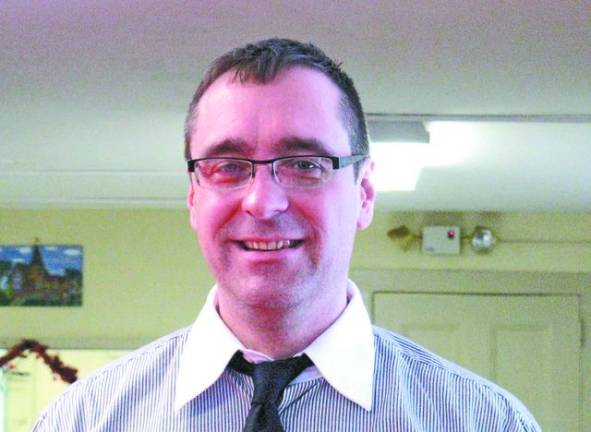'Sin finds out the criminal'

By Ginny Privitar
CHESTER — Port Jervis detective and author Michael Worden has spent the last four years researching the Richard Jennings murder which took place in Sugar Loaf , in a wood lot near the intersection of Hambletonian Road and Pine Hill Road in 1818.
The case was notorious and, according to Worden, was reported in papers across the country.
The trials and subsequent hangings in 1819 were very big news. No one had been hanged in Goshen since Claudius Smith in 1779.
Now Worden has published his book, The Murder of Richard Jennings: the true story of New York’s first murder for hire, the most complete record of the murder, subsequent trials and final chapters in the lives of the principal players. It’s a fascinating glimpse into the lives of several families, some prominent and some whose descendants live today.
Worden has also examined the legends that grew up around the story and managed to get to the bottom of some of them, including the final resting places of two of the convicted.
In this highly readable book, the reader has a glimpse of daily life in 1818 in Orange County and a view into the mores and system of justice at the time. Oddly, two of those who gave evidence at the inquest were eventually implicated.
Many questions arose: Why was Jennings killed?
A hastily arranged posse tracked one of the accused murderers to New York City and apprehended him. Worden, during his presentation for the Chester Historical Society, said he admired their sleuthing skills.
A crowd estimated at 20,000 is said to have witnessed the hangings of two of the convicted, which likely took place in the area where the Westgate mall stands today, off Route 17A.
“Sin finds out the criminal,” the lengthy sermon delivered on the scaffold by the Rev. Ezra Fisk, of the First Presbyterian Church in Goshen, was reprinted many times.
Unusually for the time, a black man’s account of the crime was believed over those of his white co-conspirators.
New York’s Attorney General, Martin Van Buren, involved himself in the case.
Why?
Worden answers many questions in his book. He has sought out original documents and scoured early newspapers for accounts of the time and the 1819 trial and sifted through these to separate fact from hearsay.
While Worden has his own thoughts about the murder, he allows the reader to reach his own conclusions.
This book will take you back in time and make you think of these long-ago events today, when you pass the places where these events took place.
Editor's note: The book is published by and available at www.sisubooks.com.